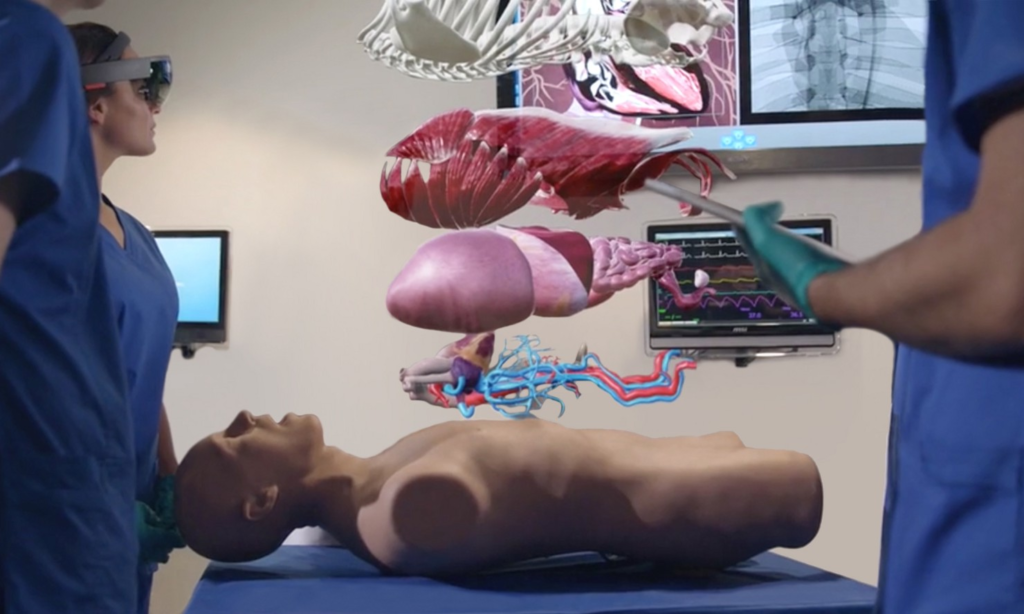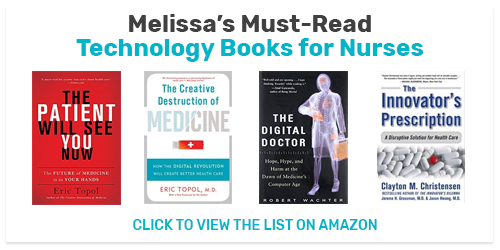How Augmented Reality is Changing Healthcare

With the release of Microsoft’s HoloLens, I couldn’t help but speculate about the impacts of augmented reality on the healthcare industry. While the effects of virtual reality on the medical profession are just being realized, this blending of digital life and real life introduces new questions. What is the potential impact of augmented reality for healthcare?
Most first learned about augmented reality through the flash trend Pokemon Go. Unlike virtual reality, augmented reality integrates digital information into the real world. Augmented reality literally augments your natural surroundings with digital effects such as holograms. This article discusses–more like envisions–the various ways augmented reality might affect healthcare.
This article was originally written for Barton Associates. Click here to view the article on their site.
Education
Augmented reality will first and foremost impact medical education. Imagine using holograms to visualize body systems to learn human anatomy. What about using holograms rather than cadavers? Holograms are much cheaper and may likely become more accessible than traditional cadavers.
Imagine simulated hospital environments to practice your skills before interacting with actual patients. Holographic computing can produce an unlimited number of healthcare settings and scenarios, enabling nurse practitioner professors to provide step-by-step instruction while peering through the eyes of the students.
Simulated Environments
Holographic computing is especially good at creating simulated environments. Today, the National Aeronautics and Space Administration (NASA) is using augmented reality to train astronauts before they go to Mars. Holographic environments allow astronauts to practice spacewalking, interacting with objects, and navigate the complex geology.
Similarly, I envision that holographic computing will be used to simulate disaster environments for healthcare providers to practice their emergency response skills. Devices like Magic Leap–dubbed the world’s most secretive startup–can create simulated earthquakes, plane crashes, tsunamis, and terrorist attacks for clinicians to engage and learn more realistically.
In addition, using augmented reality, lay persons could call 911 and show the medical team their situation through the lens of their smartphone camera. What if 911 responders could respond with holographic instructions?
3D Printing
Three-dimensional (3D) printing, also known as additive manufacturing, involves using a printer to print a 3D object. The Makerbot 3D printer brought the process into the mainstream, causing an explosion of printed innovations like working violins, guns, human stem cells, Egyptian hairstyles, and clothes.
While the bionics field continues to expand, most prosthetists still use traditional techniques like molding and casting to design new limbs. Using augmented reality software like Microsoft’s 3D paint, a personalized prosthetic might be designed to fit the actual shape of the patient’s anatomy.
Finding
Because augmented reality adds a digital layer on top of the real world, it can help with finding things from nearby defibrillators to vein or artery locations. The app AED4EU, for example, identifies defibrillator locations, marking them with a green circle, and guides people to their location using augmented reality. Furthermore, nurse phlebotomists use AccuVein, an augmented reality technology, that can identify the location of veins and arteries in a patient’s body.
Get Involved
Interested in getting involved in the design, development, and implementation of augmented reality in healthcare? Nurse practitioners have the education and experience to provide expert guidance to the creators of these technologies. Start by learning more about the technologies through reading blog articles and books like Augmented Reality: Principles and Practice or The Fourth Transformation.
Next, start contemplating in what ways this technology could “augment” your day-to-day. How could it be incorporated into patient care to improve their health outcomes? How can we use it to educate the next generation of students? If you are a PhD student, consider focusing your thesis on this technology. Request a HoloLens from Microsoft and start innovating!
What are your thoughts on augmented reality for healthcare and the future of healthcare technology? Comment below or email me!
Share on Facebook Share on Twitter Share on Pinterest
0 Comments on "How Augmented Reality is Changing Healthcare"